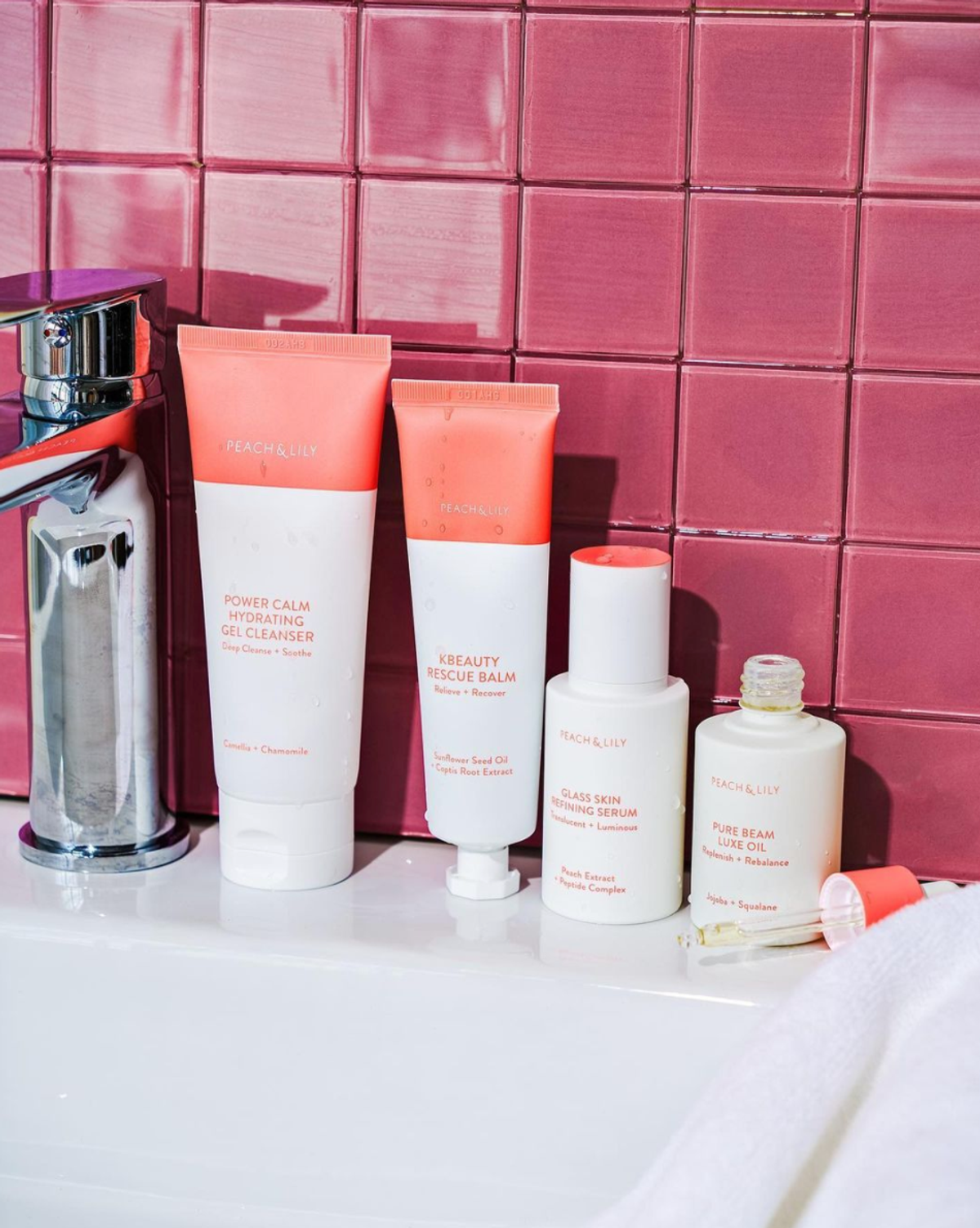Hyaluronic acid is a buzzy ingredient you've likely read about and if you've been following us here at Peach & Lily, you'll notice a number of products we curate and create include hyaluronic acid. Here, we'll breakdown all your questions about hyaluronic acid.
The quick summary:
Hyaluronic acid is a water-binding ingredient. Hyaluronic acid in skincare includes the following benefits:
- Powerfully and rapidly hydrates skin
- Visibly plumps up skin
- Helps fight free radical damage
- Helps balance oil production
- Helps repair the skin's protective barrier
What is hyaluronic acid?
Hyaluronic acid unlike glycolic acid and salicylic acid, for example, is not an acid that exfoliates skin. Instead, hyaluronic acid is a glycosaminoglycan that is made up of units very similar to that of sugar. It's a humectant that can essentially bind with water incredibly well -- so well that it can hold many hundreds of times its weight in water. One gram of hyaluronic acid can hold onto around 6 liters of water. Consider it a super water magnet.
Hyaluronic acid occurs naturally in our bodies. However, over time and with environmental stressors, studies show that our bodies potentially produce less of it and can also redistribute it. Simply put, we may lose hyaluronic acid in areas we want this water-magnet. Therefore, using it topically can help keep skin hydrated.
Are there different sizes of hyaluronic acid?
Yes, you may have heard about various molecular weights or sizes of hyaluronic acid. There are hyaluronic acid types that are larger in size and hyaluronic acid that is essentially chopped up to make it smaller in size.
Hydrolyzed hyaluronic acid and sodium hyaluronate are smaller in molecular weight. Sodium acetylated hylauronate and hyaluronic acid are larger in size.
Size matters. Depending on the size, the hyaluronic acid type will penetrate into various layers of skin -- the larger size stays closer to the surface of skin and the smaller size will go deeper into the skin. Having a formula with various molecular weights of hyaluronic acid will help the various layers of skin be hydrated.
Think of a sponge. When it's drying, the inside could still be wet but the outside could be dry. Conversely, when it's first being dampened, the inside can remain dry but the outside can start to become wet. When the sponge is fully hydrated/wet inside and out, the sponge becomes more plumped up and less brittle. Various molecular weights of hyaluronic acid can be analogous to ensuring all layers of that sponge (or in the analogy, our skin) is hydrated, plumped up and made more resilient.
Is hyaluronic acid great for all skin types?
Yes. This occurs naturally in our bodies and is a well known to be compatible with skin whether skin is oily, dry, sensitive, acne-prone, etc. The ingredient is popular for being gentle and not irritating skin. In fact, hyaluronic acid is beneficial to all skin types because hydrated skin with moisture at various layers of skin leads to many benefits. Oily skin can be more balanced, dry skin can be more resilient, acne-prone skin can break out less often, and hydrated skin can help combat accelerated signs of aging.
What is the best way to use hyaluronic acid?
Using hyaluronic acid in skincare is best used with formulas or preceding products that include water (which is most formulas) so that the skin can hold onto the water. It's also great to seal in the water/moisture with an emollient or occlusive (think, moisturizers and oils).
Where can I find hyaluronic acid?
Hyaluronic acid can be included in many types of products -- toners, essences, masks, serums, moisturizers. You can find hyaluronic acid in various molecular weights in these popular products:
If you have any other questions about hyaluronic acid, you can always email our skin therapists (our in-house licensed estheticians) at lily@peachandlily.com or find us on social media @peachandlily!
Cheers to radiance, Peaches!


